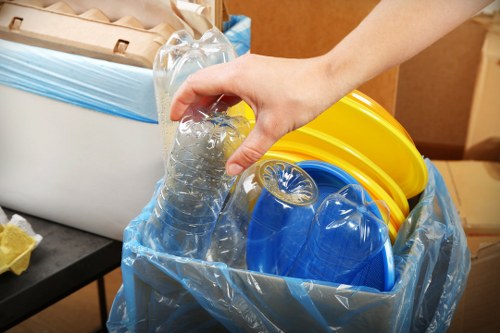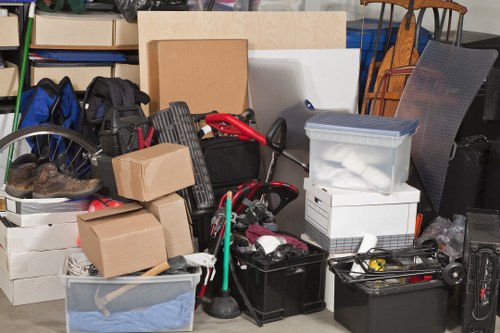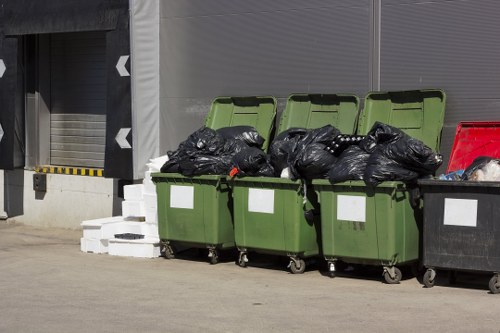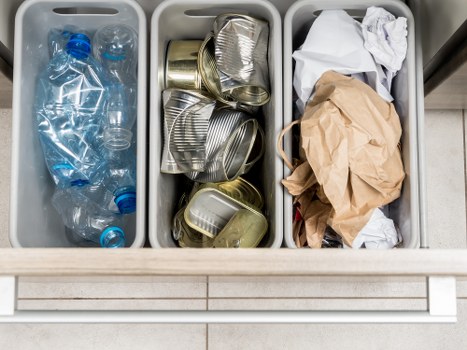Comprehensive Guide to Demolition Waste Removal in Hainault

Understanding Demolition Waste
Demolition waste encompasses various materials generated during the demolition, renovation, or construction of buildings and structures. Proper management of this waste is crucial to maintain environmental standards and ensure sustainable practices in Hainault.
Common types of demolition waste include concrete, bricks, wood, metals, plastics, and hazardous materials like asbestos. Each type requires specific handling and disposal methods to prevent environmental contamination and promote recycling.
Effective demolition waste removal not only helps in reducing landfill use but also supports the circular economy by enabling the reuse and recycling of valuable materials.

Regulations and Compliance in Hainault
Hainault enforces strict regulations concerning demolition waste to ensure that all activities comply with environmental and safety standards. Companies involved in demolition waste removal must obtain necessary permits and adhere to guidelines set by local authorities.
Compliance involves proper segregation of waste at the source, safe transportation, and environmentally responsible disposal methods. Failure to comply with these regulations can result in hefty fines and legal consequences.
Staying informed about the latest regulations and maintaining transparent practices are essential for businesses operating in this sector.

Methods of Demolition Waste Removal
There are several methods employed for the removal of demolition waste in Hainault, each suitable for different types of projects and waste materials.
Manual Removal
Manual removal involves workers physically dismantling structures and segregating waste. This method is labor-intensive but allows for precise separation of recyclable and non-recyclable materials.
Mechanical Demolition
Mechanical demolition uses heavy machinery like excavators and bulldozers to tear down structures quickly. While efficient, it requires careful planning to manage the resulting waste effectively.
Selective Demolition
Selective demolition targets specific parts of a structure for removal, minimizing waste generation and preserving materials that can be reused or recycled.

Benefits of Professional Waste Removal Services
Engaging professional demolition waste removal services offers numerous advantages:
- Efficiency: Experienced teams can complete waste removal swiftly, reducing project timelines.
- Safety: Professionals follow safety protocols to minimize risks associated with demolition activities.
- Compliance: Ensures all activities adhere to local regulations and environmental standards.
- Recycling: Expertise in segregating and recycling materials, promoting sustainability.
Choosing a reliable service provider can significantly enhance the overall success of demolition projects in Hainault.

Recycling and Reuse of Demolition Waste
Recycling and reusing demolition waste is pivotal for environmental conservation and resource efficiency in Hainault.
Materials like metals, concrete, and wood can be recycled and repurposed for new construction projects. This not only reduces the demand for raw materials but also lowers the carbon footprint associated with manufacturing new products.
Implementing effective recycling programs helps in diverting significant amounts of waste from landfills, fostering a sustainable community.
Metal Recycling
Metals such as steel and aluminum are highly recyclable and retain their properties indefinitely. Proper collection and processing can transform scrap metals into valuable resources for various industries.
Concrete and Bricks
Crushed concrete and bricks can be reused as aggregate in new construction projects, roadways, and landscaping. This practice minimizes the extraction of natural resources and reduces waste disposal needs.
Wood Reuse
Reclaimed wood can be refurbished and used in new building projects, furniture making, and decorative applications, preserving its aesthetic and structural qualities.
Steps for Effective Demolition Waste Removal
Implementing a structured approach ensures efficient waste removal and compliance with regulations.
- Assessment: Evaluate the extent of demolition and identify the types of waste generated.
- Planning: Develop a waste management plan outlining strategies for segregation, recycling, and disposal.
- Execution: Implement the plan using appropriate methods and equipment.
- Monitoring: Continuously oversee the process to ensure adherence to standards and make necessary adjustments.
- Reporting: Document all activities for accountability and regulatory compliance.
Tools and Equipment
Utilizing the right tools and equipment facilitates efficient waste removal. This includes dumpsters, loaders, compactors, and recycling machinery tailored to handle specific types of demolition waste.
Environmental Impact of Improper Waste Removal
Neglecting proper demolition waste removal can have severe environmental consequences in Hainault.
Improper disposal leads to increased landfill usage, soil and water contamination, and the loss of recyclable materials. This negatively impacts local ecosystems and public health.
Moreover, it contributes to greenhouse gas emissions, exacerbating climate change issues. Sustainable waste management practices are essential to mitigate these adverse effects.
Soil and Water Contamination
Hazardous materials like asbestos and chemicals can leach into the soil and waterways if not handled correctly, posing risks to wildlife and humans alike.
Air Pollution
Dust and emissions from improper demolition activities contribute to air pollution, affecting respiratory health and overall air quality in Hainault.
Cost-Effective Strategies for Waste Removal
Implementing cost-effective strategies can significantly reduce the expenses associated with demolition waste removal.
- Waste Segregation: Sorting waste at the source minimizes disposal costs and maximizes recycling potential.
- Bulk Transportation: Consolidating waste transportation reduces fuel consumption and lowers transportation costs.
- Recycling: Selling recyclable materials can offset waste removal expenses and generate additional revenue.
- Efficient Planning: Properly planning the demolition process avoids unnecessary delays and resource wastage.
- Utilizing Technology: Advanced equipment and software can enhance efficiency and reduce operational costs.
Adopting these strategies ensures that waste removal is both economically and environmentally sustainable.
Choosing the Right Demolition Waste Removal Service in Hainault
Selecting a competent waste removal service is critical for the success of demolition projects.
Consider the following factors when making your choice:
- Experience: Look for companies with a proven track record in demolition waste removal.
- Licensing and Certification: Ensure the service provider is licensed and adheres to industry standards.
- Reputation: Check reviews and testimonials to gauge customer satisfaction and reliability.
- Equipment: Verify that the company has the necessary tools and machinery for efficient waste removal.
- Environmental Practices: Choose services that prioritize recycling and sustainable disposal methods.
Local Expertise
Services with local expertise understand the specific regulations and logistical challenges in Hainault, ensuring smoother operations and compliance.
Innovations in Demolition Waste Management
Advancements in technology are transforming demolition waste management, making it more efficient and sustainable.
- Automated Sorting Systems: These systems enhance the accuracy and speed of waste segregation.
- Recycling Technologies: Innovative recycling methods enable the extraction of higher-quality materials from demolition waste.
- Green Demolition Practices: Techniques such as deconstruction focus on preserving materials for reuse.
- Software Solutions: Digital tools assist in planning, monitoring, and optimizing waste removal processes.
Eco-Friendly Materials
The development of eco-friendly materials that can replace traditional construction materials is reducing the overall waste generated during demolition.
Case Studies: Successful Demolition Projects in Hainault
Several notable demolition projects in Hainault have successfully implemented effective waste removal and recycling strategies.
For instance, the redevelopment of the Hainault Area included the demolition of outdated structures, where over 70% of the waste was recycled, significantly reducing the environmental impact.
Another project involved the selective demolition of a commercial complex, which preserved architectural elements and repurposed materials, showcasing sustainable demolition practices.
Lessons Learned
These case studies highlight the importance of meticulous planning, effective waste segregation, and collaboration with experienced waste removal services to achieve successful and sustainable outcomes.
Future Trends in Demolition Waste Removal
The demolition waste removal industry in Hainault is poised for significant growth and transformation, driven by sustainability goals and technological advancements.
- Increased Recycling Rates: Efforts to maximize recycling and reduce landfill dependency continue to gain momentum.
- Smart Waste Management: Integration of IoT and data analytics for real-time monitoring and optimization of waste removal processes.
- Circular Economy Models: Emphasis on designing buildings for easier deconstruction and material recovery.
- Green Certifications: More projects aiming for green building certifications, influencing demolition waste practices.
Staying abreast of these trends is essential for stakeholders to remain competitive and align with environmental sustainability objectives.
Advanced Recycling Facilities
The development of state-of-the-art recycling facilities in Hainault will enhance the capacity to process demolition waste more efficiently and sustainably.
Conclusion
Effective demolition waste removal in Hainault is integral to sustainable development and environmental conservation. By adhering to regulations, employing efficient removal methods, and prioritizing recycling and reuse, the community can significantly reduce its ecological footprint.
Engaging professional services, leveraging technological innovations, and adopting cost-effective strategies are key to successful waste management in demolition projects.
As the industry evolves, embracing future trends will ensure that demolition waste removal practices remain efficient, compliant, and environmentally responsible.
Take the Next Step
Ready to manage your demolition waste effectively? Contact us today to ensure a sustainable and compliant waste removal process in Hainault.